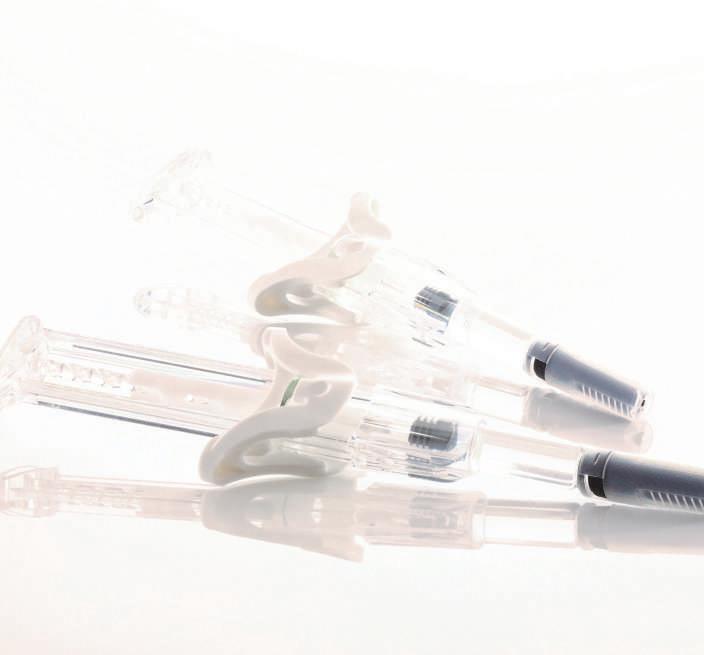Logistics & Supply Chain Management
How Advancements in Logistics Technology will Play a Role in Combating COVID-19 Coronavirus continues to dominate headlines as it spreads around the world. At the time of writing, there have been over 92,000 reported cases worldwide resulting in the deaths of more than 3100 people. As well as China, some of the hardest hit countries are Iran, South Korea and Italy, showing the truly global scale of the spread.
COVID-19 obviously has no known antiviral cure or vaccine at this point with pharmaceutical companies scrambling to find effective means to help curb the spread of the virus. However, once a vaccine is developed, the next stage will be to distribute it globally. In a normal situation, getting pharmaceuticals in large enough quantities to key locations is critical. In the event of a pandemic, it is a question of life or death and there is no room for failure. The Importance of Simulations The lack of a vaccine or cure for COVID-19 and the fast spread of the disease has meant that getting various medications to infected areas has had to be rapid. Work that would normally take between 12 to 18 months is being condensed into weeks and months. At the moment, China has more than 80 live or pending clinical trials on potential treatments for COVID-19. This has resulted in an increased transport volume of antivirals and experimental drugs to China. Because of this, even the scale of temperature-controlled containers needed for the transportation of vaccine trials is enormous. While these trials run their course, though, pharmaceutical logistics companies are using this time to generate supply route simulations to establish how they will distribute medications to locations in China and around the world. Any temperature excursion experienced during the supply chain could spoil vaccines, causing them to be ineffective or require chemical testing, delaying release of the product to market increasing inventory and forcing express reordering to cover the 94 INTERNATIONAL PHARMACEUTICAL INDUSTRY
gaps in supply. Simulation allows you to significantly de-risk this process at low cost. Simulations are vital in modelling the transportation of treatments. Bio-vaccines, such as those that will likely be used to counter the COVID-19 outbreak, will need to be transported at temperatures between 2oC and 8oC. Maintaining these temperature ranges can be increasingly difficult considering the complexity of the supply chain. There are many different phases in the supply chain of a bio-vaccine including the transfer of the pallets, from air freight – which experiences very low temperatures during transit, to road freight – which can experience higher temperatures. Added to this the customs requirements at borders and the handling of the pharmaceuticals on the ground and the process becomes fraught with moments when temperatures can occur. Our Transport Planner models variables such as time, external temperature and internal temperature to assess the viability of the journey. By using the largest data pool of its kind containing real-world temperature analysis of cold storage containers travelling around the world, pharmaceutical companies are able to simulate routes, eliminating the need for time- and cost-intensive tests. By using simulators such as this, logistics companies and pharmaceutical businesses can effectively model entire supply chains in advance; eliminating real-world spoilage. In fast-moving cases such as COVID-19, door-to-door modelling is an important factor: as limiting the exposure of pharmaceuticals to external factors will limit temperature deviations and thus increase the likelihood of the vaccines remaining effective. Dealing with Outbreaks Across the World At present the virus is in 79 countries, but this is likely to continue to grow at pace. With this in mind, biopharma manufacturers and pharmaceutical
logistics need to be prepared to ship anywhere in the world. Prior to the COVID-19 outbreak, all shipments to China had to be unloaded to another container as the pallets and containers they arrived on were not allowed to leave the airport. This meant bio-vaccines and other temperaturesensitive pharmaceuticals were often spoiled (or had to be retested) in transit due to being exposed to high temperatures. In the modern world, however, the use of IoT containers mitigates this issue. Since the outbreak, these regulations have been relaxed, allowing door-todoor routes to be used. By doing this, it’s easier for logistics companies to track deliveries and ensure that once ready, vaccines that arrive are viable and can be used immediately in hospitals to help contain and then reduce the amount of infections. Even just five years ago, the pharmaceutical industry had no other choice but to accept a gold standard of around eight per cent of biologics spoiling in transit. In fact, the IATA Air Cargo Handling report produced at the beginning of 2019 estimated that it was as much as “20% of temperaturesensitive products are damaged during transport due to a broken cold chain”. Much of this occurs due to a “lack of compliance, standardisation, accountability and transparency across the air transport supply chain”. With SkyCell’s patented IoT enabled smart containers, we are now looking at a spoilage rates approaching zero. To put this in context, a standard shipment of vaccines, similar to that which any COVID-19 vaccine would travel in, would be around 100,000 vials. The reduction in spoilage rate would see an additional 8000 viable vials today compared to five years ago. This is a significant improvement – each one of these bio-vaccine vials will save lives and are therefore extremely valuable. Being able to deliver the vaccines to key areas in the Spring 2020 Volume 12 Issue 1
























